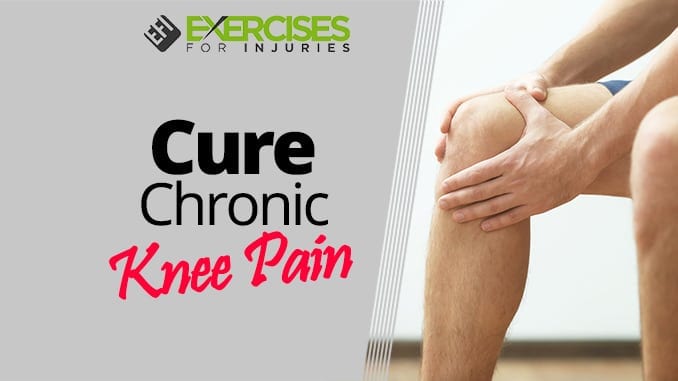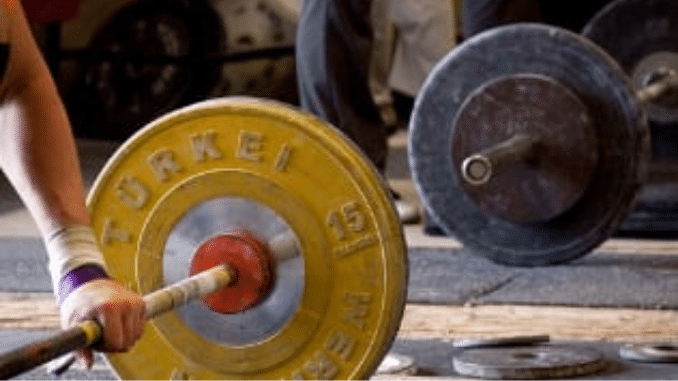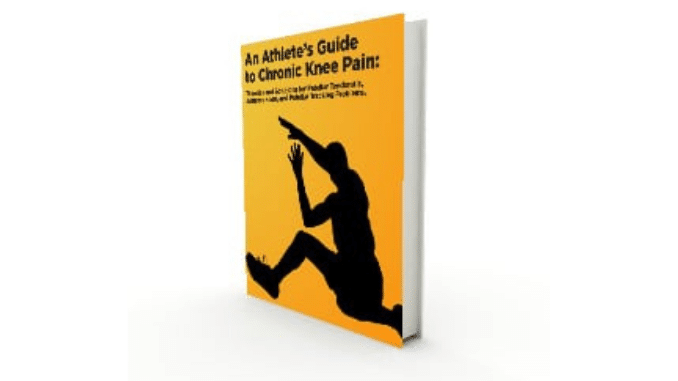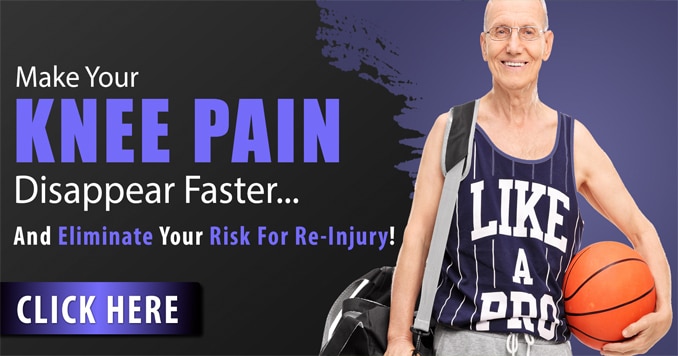
Nothing is as scary or as debilitating as a knee injury. Yet everyone—athletes and fitness enthusiasts—constantly ignore chronic knee pain. And I was one of them. There came the point when walking up steps was a death sentence. But there was no way I would miss my squatting session, even if the pain reached a new high. I just thought it was the nature of the beast—that there was nothing I could do to fix it. So I saw it as a badge of honor. It was more like a badge of stupidity.

Sometime in 2009, I posted a rather gruesome video to YouTube. No, no heads were chopped off. And no, blood wasn’t spewing into the next county. It was just a close-up of my knee flexed and extended while nasty clicks, pops, and cracks radiated from my patellar tendon. Although I knew it wasn’t exactly “healthy,” I knew that my knee was structurally sound. There were no torn ligaments. No mangled menisci. But my patellar tendon was on the fritz, and I had no idea why.
Instead of idly accepting a life of chronic knee pain, I made dramatic lifestyle changes. I didn’t want to struggle to get in and out of cars at 21. So, I experimented. About six months into my quest, I knew I had something. And one year later, I collected and organized what I found into a grand theory and accompanying routine so that I could test it on others.
KNEE = ELBOW
One thing that sparked my interest—and paved my road to rehabilitation—was understanding that the lower limb shares many similarities with the upper limb. The ankle and wrist are mobile yet fragile. The knee and elbow are facilitators—strong links in a connected chain. And the hip and shoulder are the complex, powerful, and responsible joints that connect the limbs to the body.
After being around the strength and health world for a while, you notice things. At that point, I had done a boatload of interning and personal studies, so I was pretty in tune with the industry.
Golfer’s elbow became a frequent topic of discussion among general fitness trainees. The elbow was (and still is) a hot spot for lifters. 99% of the remedies for the golfer’s elbow involved ditching the straight bar and moving something that allowed a hammer or neutral grip. This advice holds to this day.
It took me a while to step back far enough to conceptualize this, but this advice says that the position of the wrist determines elbow health. There were no super-secret rehab exercises. Avoid straight bars to stop putting the elbow in a compromised place.
I paralleled this with my knee rehab, consisting of bunches of TKEs, Petersen step-ups, leg extensions, hamstring curls, stretches, and quad stretches—all things that focus directly on the knee.
But if the elbow didn’t need direct rehab, why would the knee? This made sense to me at the time because my knee was getting worse. And now that I’ve helped many people, I notice that TKE’s and like movements don’t work with more severe cases of tendonitis.
THE EQUATION OF LEGEND
In cases of chronic knee pain, the patellar tendon hates life from the crudest look. It’s your job to find out why and how to fix it. Most times, the answer isn’t to pound it with more dysfunctional movement. You’ll never be healthy if your knee hurts when you squat, and keep squatting through the pain.
The knee can rotate somewhat and is a rather particular joint, but it’s boring compared to the hip and shoulder. (It’s funny how so much dysfunction can manifest itself in such a simple structure.) So I made a bold prediction, and one I still believe in: most chronic knee pain has nothing to do with the knee itself.

The overall movement of the knee depends on both the hip and ankle. Don’t believe me? Rotate your ankle and stand on the side of your foot (invert your ankle). Try to collapse your knee inward. It’s not going to happen. There are more examples, but the idea is that the knee—and the elbow—are facilitators when used in more significant compound movements. They connect the powerhouse of the chain (hips and shoulders) to the distributors and manipulators of the chain (hands and feet).
So I created this mega fancy calculus like a complicated equation to explain this Einstein-like phenomenon, and it goes something like this:
FOOT + HIP = KNEE
While I’m sure this holds in most knee injuries—even the severe ones—this recipe primarily targets chronic issues such as tendonitis, tendinosis (jumper’s knee), and even patellar tracking problems. They are all born from similar dysfunctions.
AN ATHLETE’S GUIDE TO CHRONIC KNEE PAIN
Suffering from tendonitis during a college basketball tryout, my 19-year-old self wished there was a specific guide for athletes and debilitating chronic knee pain. Fast forward to now, I confidently hold the systematic and structured system I once wished I had.
Knee information is abundant, but not much narrowing in on the chronic troubles that athletes face—the stuff that’s not serious enough for surgery yet still bothersome in life and on the field. And let’s face it: recovery from a torn meniscus will be different from recovery from tendonitis. I wanted to focus on those nagging chronic knee issues that athletes face because I was once in their shoes.

Athlete’s Guide to Chronic Knee Pain: Theories and Solutions for Patellar Tendonitis, Jumper’s Knee, and Patellar Tracking begin with a small memoir so that readers can immediately tell whether or not they can benefit from the information. The theories and solutions for beating chronic knee pain are followed, 
It’s only a matter of time before this theory is widely accepted, as research is slowly emerging to support it.
So if either you or one of your athletes suffers from chronic knee pain, check out An Athlete’s Guide to Chronic Knee Pain. Or you can live with the regret of failing to reach your athletic peak, hating life every day, slouching your way through the pain, and just saying.
By Anthony Mychal

